Smartsheet
Smartsheet vs. Google Docs and Google Sheets
 Smartsheet |
Google Sheets |
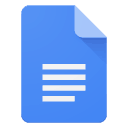 Google Docs |
|
|---|---|---|---|
Project Management |
|||
Gantt View |
x | o | o |
Calendar View |
x | o | o |
Kanban Board / Card View |
x | o | o |
Sub-Tasks (collapse/expand) |
x | o | o |
Task Dependencies |
x | o | o |
Reminders |
x | o | o |
Cross-Project Resource Views |
x | o | o |
Cross-Project Summary Views |
x | o | o |
Flexible Work Management |
|||
Spreadsheet View |
x | x | o |
Create Custom Fields |
x | x | o |
Filters |
x | x | o |
Formulas |
x | x | o |
Formatting |
x | x | x |
Cross-Sheet Search |
x | o | o |
Graphs/Charts |
x | x | x |
Collaboration |
|||
Share Online (internal or external) |
x | x | x |
Publish |
x | x | o |
File Attachments |
x | o | o |
Comments |
x | x | x |
Notifications |
x | x | x |
Change History |
x | x | x |
Updates Requests |
x | o | o |
形式 |
x | x | o |
Top 5 Reasons to Manage Work in Smartsheet over Google Docs & Google Sheets
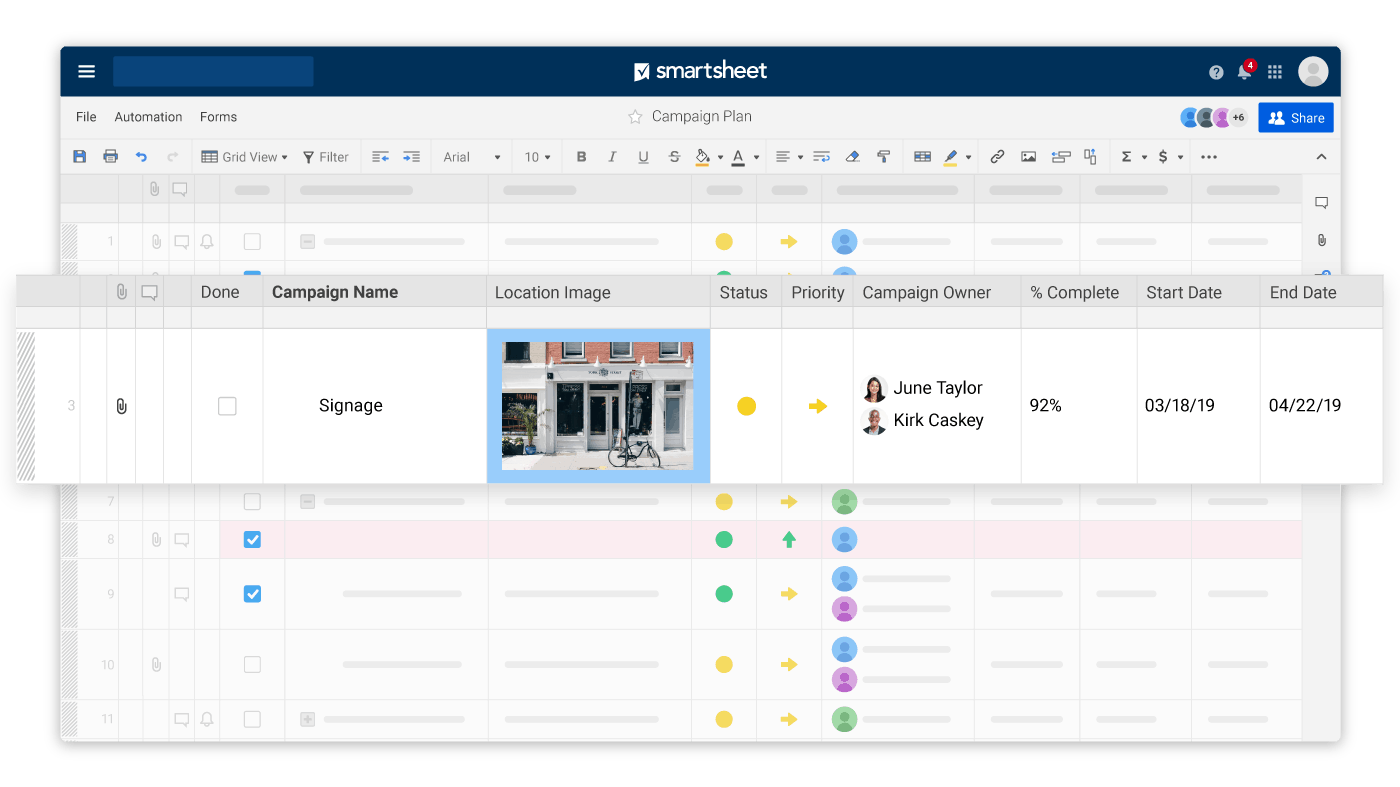
1. It’s Simple, Intuitive, and Visual
On the visual front, Smartsheet has Google beat with three features:
Hierarchyin Smartsheet enables you to organize your work with indented rows and collapsible sections. Plus, with the parent-child relationship between rows, you can write formulas to roll up key information nested in one group or another.
Column typesin Smartsheet have special properties that make your sheets more powerful. Decide whether a column should contain text, numbers, a contact list, a date, a dropdown list, checkboxes, an auto-numbering sequence, and even symbols. You can quickly convey everything from priority to status with the range of column types.
Imagesin Smartsheet are dynamic, as they snap right into a cell and remain in context when rows are moved or resized. No complicated functions to write or time wasted working around the limitations with Google Sheet
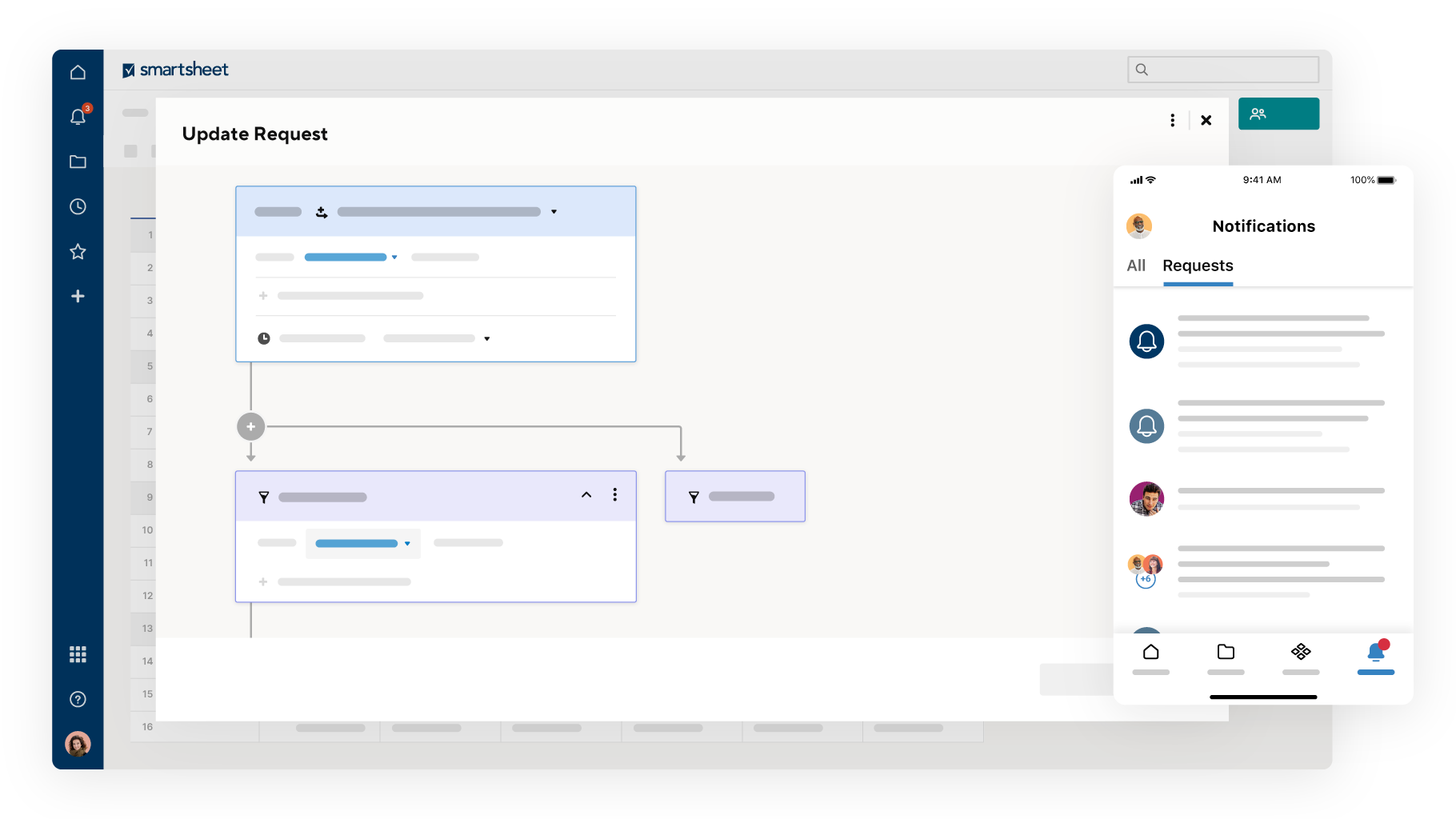
2. Streamlines Everyday Collaboration
Google offers good collaboration functionality for documents and sheets - it’s easy to comment, share, etc. But productivity is more than document collaboration. It involves planning, communicating, organizing, and prioritizing. One way Smartsheet promotes collaboration is with the ability to request updates from others. You can request updates on individual cells, columns, or entire rows within a sheet, and make it clear to recipients what action to take. They provide their updates in an intuitive form and the updates post directly back into your sheet.
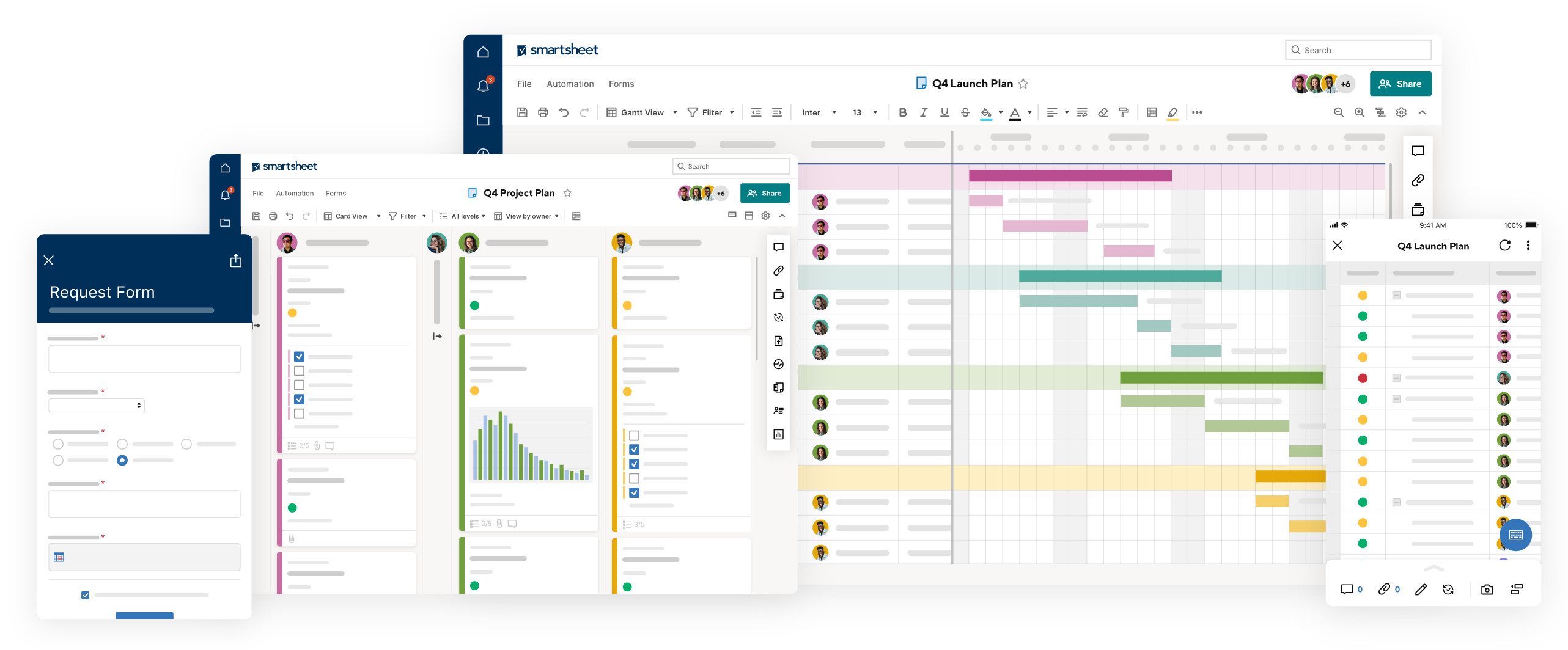
3. Helps Visualize Your Work
今天的工作的本质要求你公司llaborate with a range of individuals and teams, potentially in different locations and with different work preferences. Smartsheet solves for this with its many views - Grid, Gantt, Calendar, and Card - so that individuals and teams can consume and share information the way they want to. Changing views is as simple as clicking a button.
UseGrid Viewto create project plans, assign tasks, and update status in one, familiar interface.
Gantt Viewallows you to instantly create timelines, set milestones, and track progress.
Visualize deadlines and important dates inCalendar View.
Visually track tasks through the stages of your project or process with the Kanban-styleCard View.
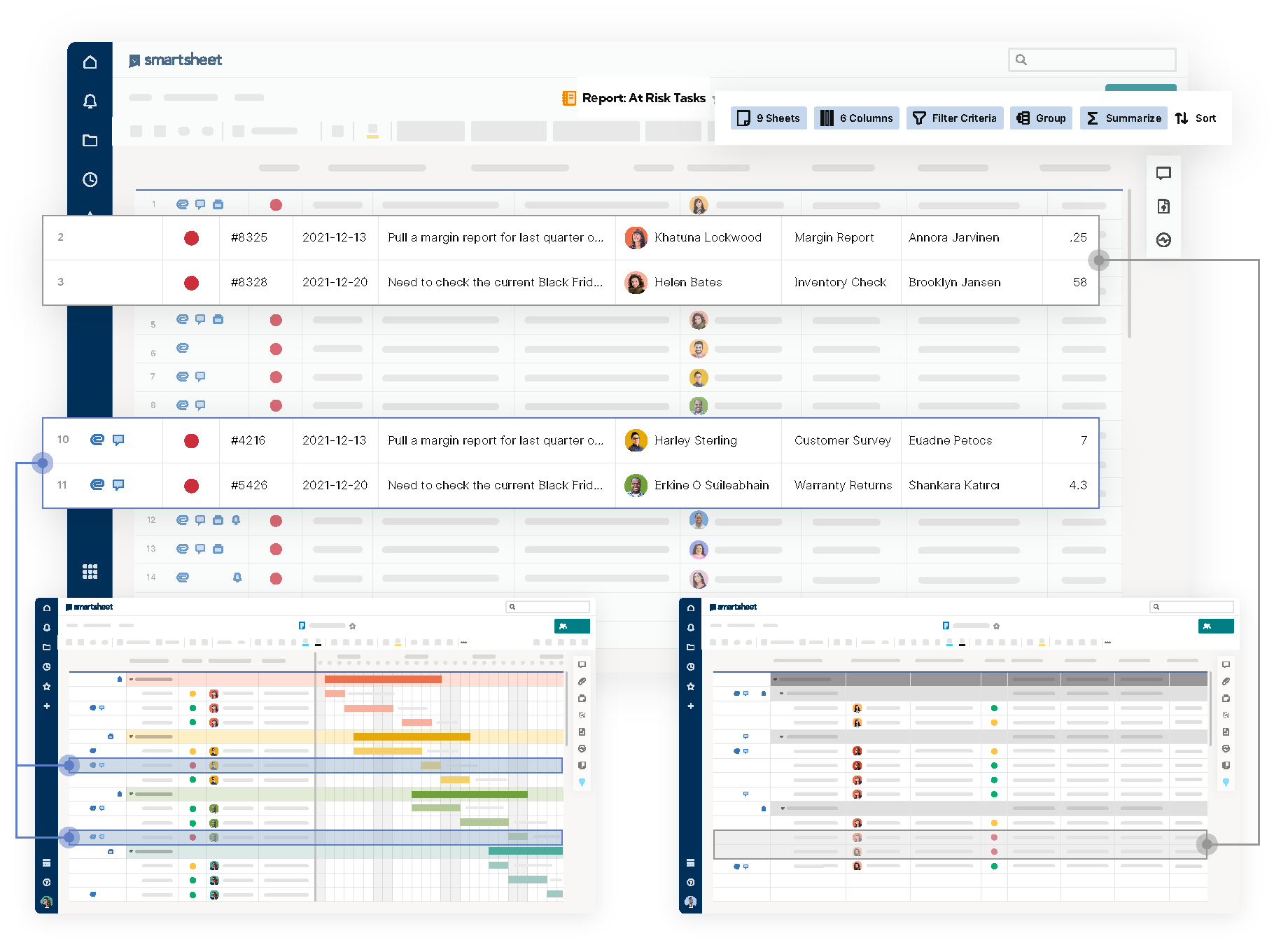
4.减少了报告“税”
The burden of reporting - manually reminding, collecting, and updating inputs across your internal and external teams - is tedious and time consuming. Smartsheet eliminates or reduces this ‘tax’. With Smartsheet reports, you can roll up information across multiple sheets into one, always up-to-date source of the truth. Reports are real-time and bi-directional, so that every change made in a report is reflected in the underlying source sheet. While you might be able to code something that mimics this in Google Sheets, it will take much more effort than in Smartsheet.
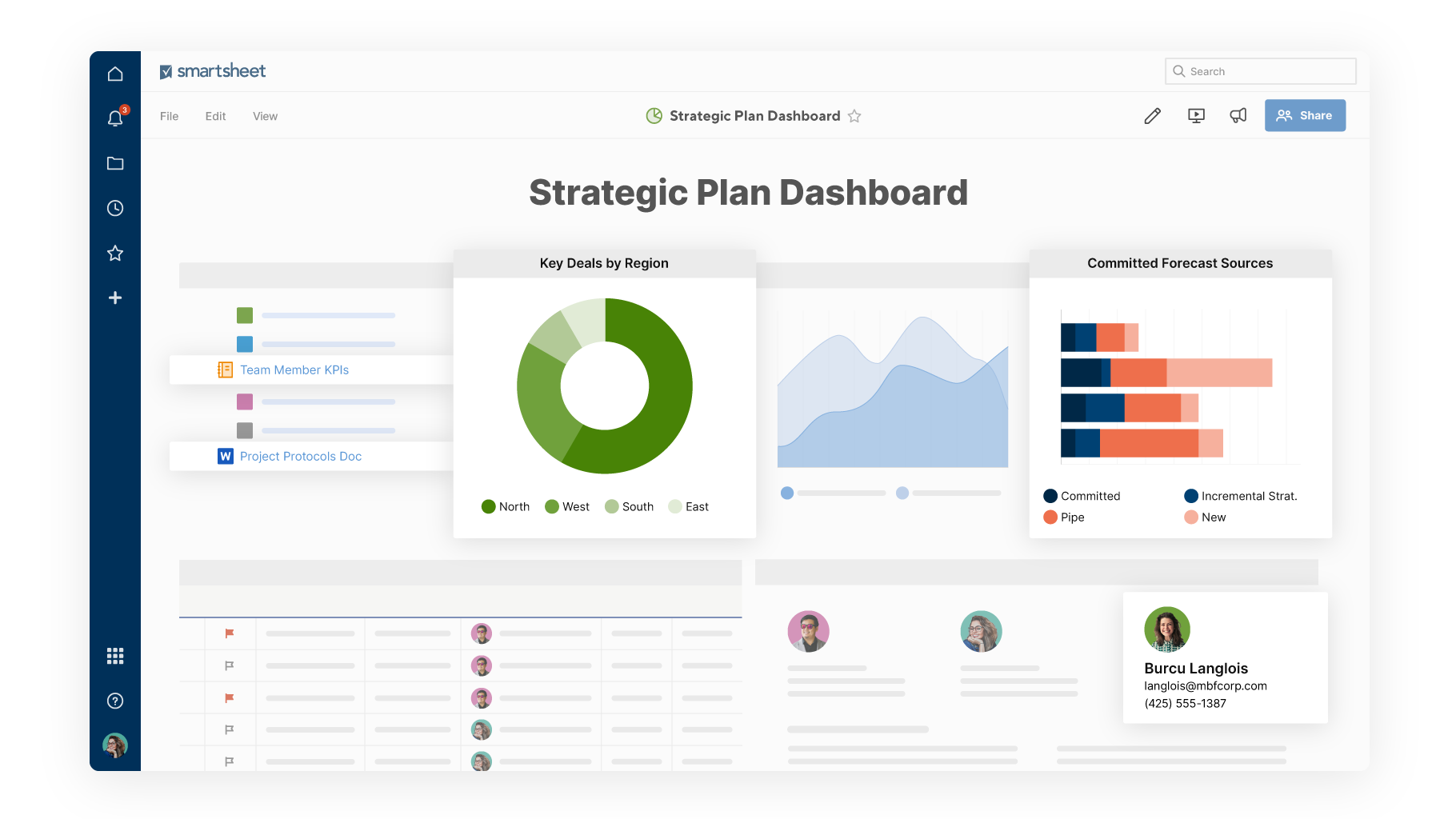
5. Brings All Your Work Together
Although with Google Sites you can make internal wiki-like pages, Smartsheet Sights are different. They are designed to enhance the value of information in Smartsheet, by exposing it in better, more useful ways. Sights help you showcase the valuable information across your sheets and reports at the level of detail you choose, with no coding required. Surface a project sheet or report, summarize key information in a summary list, or show data, like key metrics to improve transparency across your work.